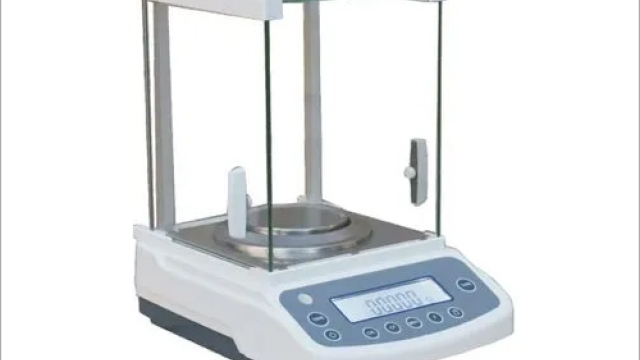
Practical Applications of High-Precision Analytical Balances

In the world of laboratory science, precision is paramount. High-precision analytical balances play a crucial role in ensuring accurate measurements to achieve reliable results. Designed to measure small mass variations, these balances are essential tools in various fields, including chemistry, biology, and pharmaceuticals. Their ability to provide precise weight readings can significantly impact experimental outcomes and product quality.
W&J Instrument stands out as a professional manufacturer and distributor of high-quality electronic balances, moisture analyzers, viscometers, and other laboratory instruments. With a focus on innovation and reliability, W&J Instrument equips laboratories with the tools necessary to maintain the highest standards of measurement accuracy. As we explore the practical applications of high-precision analytical balances, it becomes clear how these instruments contribute to advancements in research and industry.
Understanding High-Precision Analytical Balances
High-precision analytical balances are essential instruments in scientific laboratories, designed to provide accurate and repeatable measurements of mass. These balances are capable of measuring weights with high resolution, often to the nearest milligram or even micrograms, making them invaluable for applications in chemistry, biology, pharmaceuticals, and various other fields. The ability to obtain precise measurements is critical for experiments and formulations, where even the slightest variation can lead to significant differences in results.
These balances typically come equipped with advanced features such as different weighing modes, temperature compensation, and built-in calibration functions. Many models also offer connectivity options, allowing data transfer to computers and laboratory information management systems. This integration helps streamline workflows and ensures that data can be easily analyzed and documented, enhancing the overall accuracy of research and development processes.
W&J Instrument manufactures a variety of high-precision analytical balances that cater to diverse laboratory needs. Their commitment to quality and precision ensures that each instrument meets rigorous standards, providing reliable results for a wide range of analytical applications. By using these balances, researchers can trust that their measurements are not only accurate but also repeatable, which is vital for producing valid scientific outcomes.
Applications in Laboratory Settings
High-precision analytical balances play a crucial role in various laboratory settings, providing the accuracy and reliability needed for a wide range of scientific applications. In research laboratories, these balances are essential for weighing reagents, samples, and standards with extreme precision. This accuracy is fundamental in experiments where even minor differences in mass can lead to significant variations in results, ensuring that scientists can replicate studies and validate findings with confidence.
In pharmaceutical and chemical laboratories, high-precision balances are vital for formulating compounds and preparing solutions. They allow technicians to measure active ingredients and excipients precisely, which is critical for drug formulation and quality control. The ability to weigh small amounts accurately ensures that products meet regulatory standards and perform as intended, ultimately impacting patient safety and effectiveness of treatments.
Moreover, in educational institutions, analytical balances serve as important tools for teaching students about fundamental concepts in chemistry and laboratory practices. These instruments help students develop practical skills in measurement and enhance their understanding of the importance of precision in scientific research. Additionally, they are often used in experiments that require strict adherence to methodologies, reinforcing the standards for accuracy in scientific inquiry. In the world of laboratory science, where precision is paramount, high-precision analytical balances are essential tools, and you can learn more about their features and applications at https://gbsnap.com/.
Choosing the Right Balance for Your Needs
When selecting a high-precision analytical balance, it is essential to consider the specific requirements of your laboratory work. Understanding the level of accuracy needed is crucial; analytical balances typically offer precision up to four decimal places, making them ideal for applications that demand stringent measurements. If your analysis involves weighing small samples, such as powders or chemicals, investing in a model with enhanced precision is advisable. Additionally, think about the maximum load capacity you will require, as it varies across different balance models.
Another important factor is the balance’s features. Some analytical balances come equipped with advanced capabilities such as built-in calibration functions, density determination, or connectivity options for data transfer and integration with laboratory management systems. Consider what additional features will benefit your workflow, as these can significantly enhance efficiency and accuracy. Models from manufacturers like W&J Instrument may offer tailored options that align with the unique demands of your research or industrial applications.
Lastly, ensure that the balance you choose complies with relevant industry standards and regulations. Depending on your field, you may need a balance that meets specific quality assurance benchmarks or certifications. Moreover, consider the support and service provided by the manufacturer, including training, maintenance, and warranty options. By thoroughly assessing these factors, you can choose an analytical balance that will support your laboratory’s goals and enhance your overall productivity.
Innovations in Analytical Balances
The field of analytical balances has seen significant advancements in recent years, driven by the need for greater accuracy and efficiency in laboratory environments. Modern analytical balances now integrate sophisticated technologies such as automatic calibration, ensuring that users can achieve precise measurements without the need for frequent manual adjustments. This feature not only enhances measurement reliability but also saves time, allowing researchers to focus on their experiments rather than on equipment maintenance.
Another remarkable innovation is the implementation of connectivity features in analytical balances. With the rise of the Internet of Things, many new models offer wireless connectivity options, enabling seamless data transfer to computers and laboratory information management systems. This capability is essential for maintaining accurate records, facilitating collaboration among team members, and streamlining workflows. Users can now monitor and manage balances remotely, increasing efficiency in data management processes.
Moreover, the incorporation of user-friendly interfaces and advanced software packages has transformed how researchers interact with analytical balances. Touchscreen displays and customizable settings allow for quicker and easier navigation through various functions. Modern software often includes features for sophisticated data analysis, making it simple for users to perform complex calculations and generate reports. As a result, high-precision analytical balances are not only easier to use but also empower laboratories to enhance their analytical capabilities.



